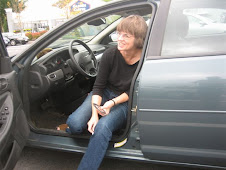Remember, I was taking science in a Catholic high school in the early '60s where the boys were on the first two floors and the girls on the third and fourth; nuns taught us, brothers the guys. So my beloved Latin teacher was also my chemistry and physics instructor. I would never make it in today's environment that encourages girls to take STEM classes as my interest in anything non-literature or non-history ended with first year algebra and biology (come to think of it, I really didn't get much out of earth science either except my love malachite and knowledge of what refractories are).
Dear Sister Ruth was encouraged to get me through the Regents tests for chem and physics by bribes from my mother of homemade brownies. Now in the early 60s and in a Catholic school, the periodic table probably had 80 elements on it, and physics was essentially mechanical, up to energy equals mass squared, probably instilled in us to realize how deadly a car crash could be. So last fall when my college roommate's husband encouraged me to read The Making of the Atomic Bomb by Richard Rhodes and would not part with his personal copy, I bought one and added it to the "books by the pound pile" for snowed in reading. And success, I managed to finish the book before I head back to see him again last weekend for his daughter's wedding. (Neither the rehearsal dinner, wedding nor the reception seemed like the appropriate place to convene a book club, so here goes my impressions.)
While you understand by now, I am never going to be a nuclear physicist, but actually the science seemed more understandable to me (teenagers have so many other important things on their minds). I was going to title this review, What Remains, because waiting several weeks after finishing a book lessens the urge to quote paragraphs verbatim, so what I will remember about TMOTAB:
1. I knew of Oppenheimer and his leadership at Los Alamos, but never heard of Groves and his connection to Albany. Vicarious pride. Why doesn't NYS tout that connection? I can identify with him as a master of logistics, something I strive to be, to cut through delay and red tape to get the job done, and his ability to keep the peace between super talented staff. He gives me a model much better than any organizational theory book.
2. There were many six degrees of separation incidents where I could tie in Roosevelt's and Churchill's reactions to my WWII triology. I love how my seemingly random reading strives to find connections to make it a whole.
3. The only page I marked on the title page for future reference was that articulating Bohr's assessment of what the bomb would mean: "When nuclear weapons spread to other countries, as they certainly would, no one would be able any longer to win. A spasm of mutual destruction would be possible. But not war." I vaguely remember going to a play on Broadway that was a dialogue between Bohr and X. Even then the nuclear physics was unfathomably and I recall it was a good vs evil type of portrayal. In TMOTAB, there are no falsely painted evil scientists.
4. It was news to me about how aggressively several nations were pursuing splitting the cell as pure science. I was also surprised by how readily the US of A was able during war time to pull together the resources for construction, raw material, land acquisition, testing, etc. While it seemed like a purer stage of America's history, it is still a marvel that so many industries could be converted to the war/science cause. How could we mutate car assembly lines for tanks when cars aren't made in America by American companies? Where would the steel, bronze, dynamite come from?
So I gathered more context for the current state of the world and wish we had more assassins to take out the saber/bomb rattlers that threaten peace today.
Monday, April 17, 2017
Subscribe to:
Post Comments (Atom)



No comments:
Post a Comment